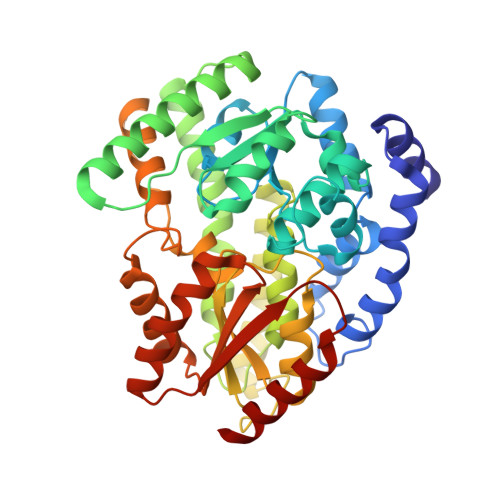ATP-dependent substrate reduction at an [Fe8S9] double-cubane cluster.
Jeoung, J.H., Dobbek, H.(2018) Proc Natl Acad Sci U S A 115: 2994-2999
- PubMed: 29507223
- DOI: https://doi.org/10.1073/pnas.1720489115
- Primary Citation of Related Structures:
6ENO - PubMed Abstract:
Chemically demanding reductive conversions in biology, such as the reduction of dinitrogen to ammonia or the Birch-type reduction of aromatic compounds, depend on Fe/S-cluster-containing ATPases. These reductions are typically catalyzed by two-component systems, in which an Fe/S-cluster-containing ATPase energizes an electron to reduce a metal site on the acceptor protein that drives the reductive reaction. Here, we show a two-component system featuring a double-cubane [Fe 8 S 9 ]-cluster [{Fe 4 S 4 (SCys) 3 } 2 ( μ 2 -S)]. The double-cubane-cluster-containing enzyme is capable of reducing small molecules, such as acetylene (C 2 H 2 ), azide (N 3 - ), and hydrazine (N 2 H 4 ). We thus present a class of metalloenzymes akin in fold, metal clusters, and reactivity to nitrogenases.
Organizational Affiliation:
Institut für Biologie, Strukturbiologie/Biochemie, Humboldt-Universität zu Berlin, D-10099 Berlin, Germany.

















